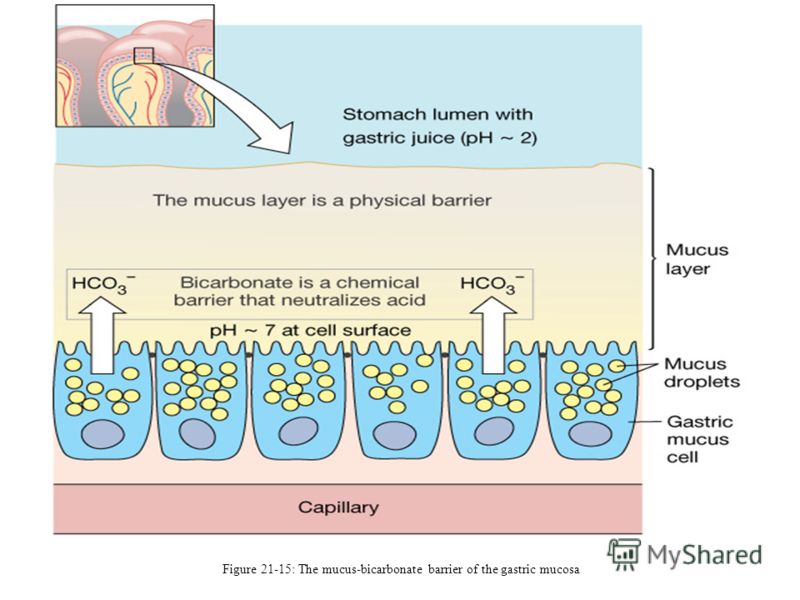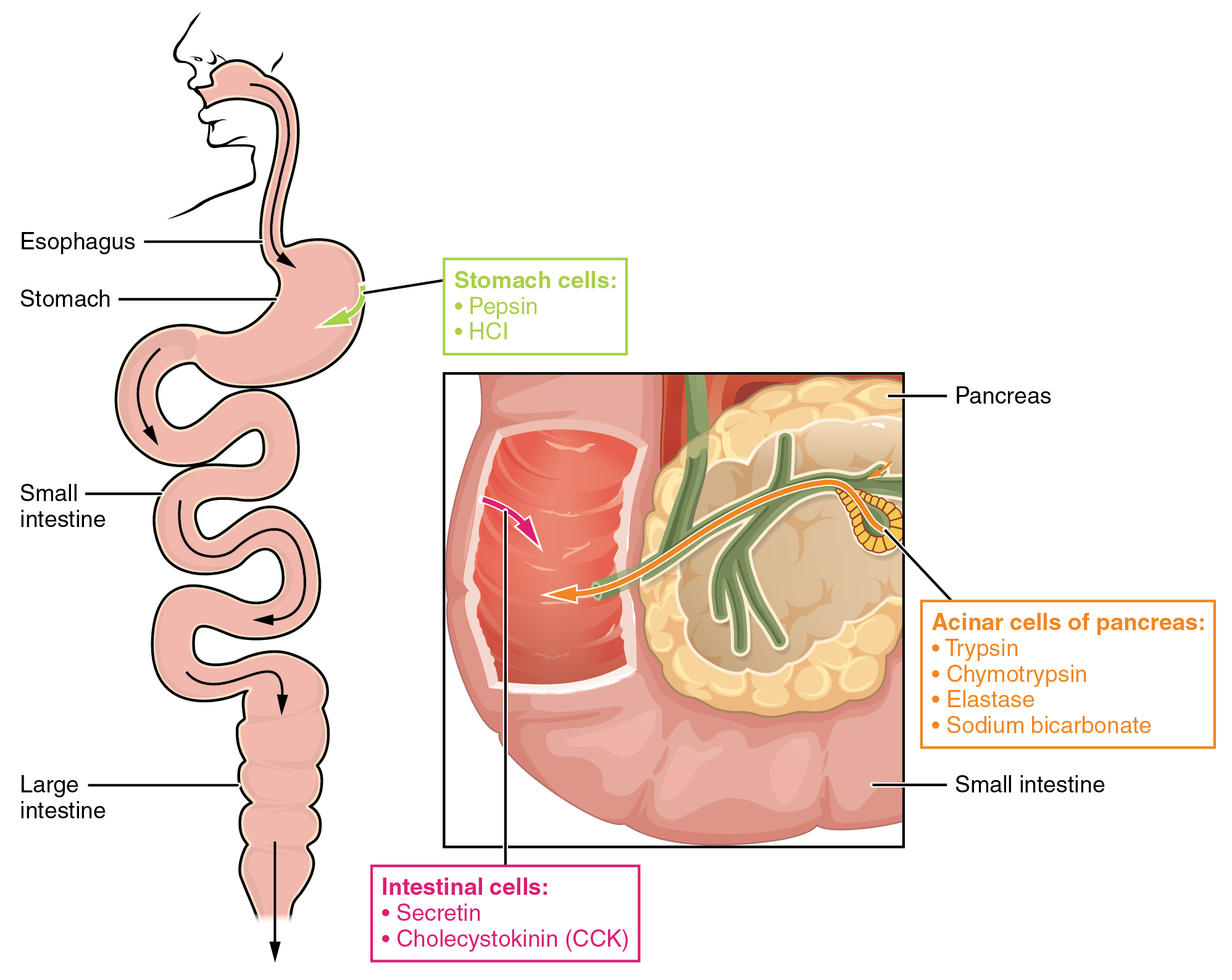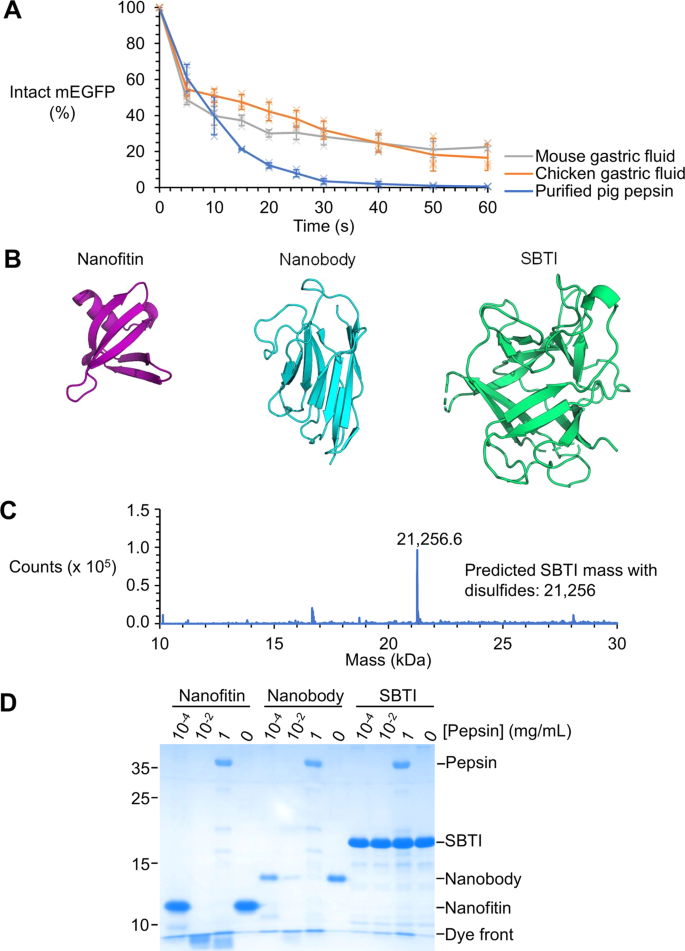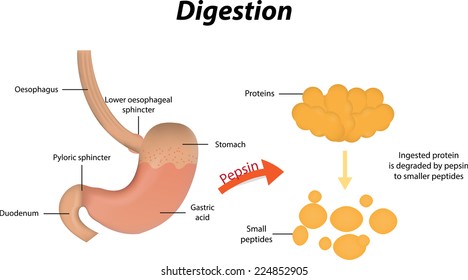These Cells Produce Pepsin Which Breaks Down Proteins
The muscular walls of the stomach churn food _____. Capillaries These tiny blood vessels transport absorbed nutrients.
Anatomy Of Organs Of The Digestive System And Their Functions Bio103 Human Biology
Parietal Cells These cells produce hydrochloric acid HCl.

. Capillaries These tiny blood vessels transport absorbed nutrients. Now it is time to design and build your own digestive system. These cells produce hydrochloride acid HCL Parietal cells.
Parietal Cells These cells produce hydrochloric acid HCl. Pepsinogen is converted to pepsin when the parietal cells found within the gastric glands secrete hydrochloric acid. Chief cells in the stomach secrete pepsinogen which is converted by the acid in the gastric lumen to pepsin an enzyme that breaks down proteins.
These cells produce hydrochloric acid HCl. What cells produce pepsin which breaks down proteins. It is produced in the chief cells of the stomach lining and is one of the main digestive enzymes in the digestive systems of humans and many other animals where it helps digest the proteins in food.
It is produced in the chief cells of the stomach lining and is one of the main digestive enzymes in the digestive systems of humans and many other animals where it helps digest the proteins in food. These tiny blood vessels transport absorbs nutrients. The pancreas also releases pepsin into the pancreatic duct which then connects to the common bile duct.
Chief Cells These cells produce pepsin which breaks down proteins. The nutrients in chyme _____ more easily _____. It is produced in the gastric chief cells of the stomach lining and is one of the main digestive enzymes in the digestive systems of humans and many other animals where it helps digest the proteins in food.
Pancreas This organ produces enzymes that break down nutrients. Want this question answered. These tiny blood vessels transport absorbed nutrients.
PepsinPepsin in complex with pepstatinPepsin is an endopeptidase that breaks down proteins into smaller amino acids. Now it is time to design and build your own digestive system. Pepsin is an endopeptidase that breaks down proteins into smaller amino acids.
Pepsin chymotrypsin and trypsin are placed under the category of proteolytic enzymes. Pepsin is the main digestive enzyme in the stomach that breaks down proteins. These cells produce pepsin which breaks down proteins.
Gastric juice comprises water mucus hydrochloric acid pepsin and intrinsic factor. The cells that produce pepsin an enzyme that breaks down proteins during the digestive process is Chief cells. Chief Cells These cells produce pepsin which breaks down proteins.
Pepsin is produced by the chief cells in the inactive form pepsinogen which is then converted to pepsin by the hydrochloric acid from the parietal cells. These cells produce pepsin which breaks down proteins. Pepsin is an enzyme that breaks down proteins.
These tiny blood vessels transport absorbed nutrients. Amylase breaks down complex carbohydrates into simple carbohydrates sugars trypsin breaks down proteins into amino acids and lipase breaks down fats into fatty acids and monoglycerides. Pepsin is an endopeptidase that breaks down proteins into smaller peptides.
Pancreas This organ produces enzymes that break down nutrients. Now it is time to design and build your own digestive system. It breaks down proteins into smaller peptides and amino acids that can be easily absorbed in the small intestine.
The pancreas releases pepsin into the pancreatic duct which leads to the pancreas. Now it is time to design and build your own digestive system. Pepsin is quite effective in breaking down peptide bonds in case of amino acids such as phenylalanine tryptophan and tyrosine.
These cells produce pepsin which breaks down proteins. Be notified when an answer is posted. Specific cells within the gastric lining known as chief cells release pepsin in an.
Pepsin is produced in the pancreass exocrine part. Move the Rectum Esophagus and Pancreas to the right and insert the Stomach so. Of these five components pepsin is the principal enzyme involved in protein digestion.
Pancreas This organ produces enzymes that break down nutrients. We see that chief cells produce pepsinogen an inactive form of pepsin. Pepsin is an endopeptidase that breaks down proteins into smaller peptides.
These cells produce pepsin which breaks down proteins. Pepsin is the chief digestive enzyme in the stomach that breaks down proteins. Capillaries These tiny blood vessels transport absorbed nutrients.
Parietal Cells These cells produce hydrochloric acid HCl. THIS SET IS OFTEN IN FOLDERS WITH. The pancreas produces pepsin mainly in two different areas.
These enzymes are involved in the hydrolysis of proteins into peptides and amino acids by breaking them down into peptide bonds. It is produced in the gastric chief cells of the stomach lining and is one of the main digestive enzymes in the digestive systems of humans and many other animals where it. These cells produce hydrochloric acid HCl chief cells.
These cells produce pepsin which breaks down proteins. Up to 24 cash back The pancreas produces three digestive enzymes. This organ produces enzymes that break down nutrients.
The pyloric glands also contain D cells which release somatostatin a hormone that inhibits the release of gastrin. Pancreas This organ produces enzymes that break down nutrients. Start with the LARGE ORGANS tab to build a.
These cells produce pepsin which breaks down proteins. How many fat Calories were converted to fatty acids when the pancreas was moved over to the right and the gallbladder was placed on the esophagus right before the pancreas. Now it is time to design and build your own digestive system.
Fat digestion is improved. Chief Cells These cells produce pepsin which breaks down proteins. These cells produce hydrochloric acid HCl.
The pylorus is a part of the stomach that produces gastrin. Capillaries These tiny blood vessels transport absorbed nutrients. Parietal Cells These cells produce hydrochloric acid HCl.
These cells produce pepsin which breaks down proteins chief cells Teeth and muscular contractions in the stomach break food down into smaller particles a process called. The muscular walls of the stomach churn food transforming food chunks into a thick liquid called. Chief Cells These cells produce pepsin which breaks down proteins.
These cells produce hydrochloric acid HCl.

Pepsinogen I An Overview Sciencedirect Topics

Pin By Alexis Bristol On Bio Biology Notes Medical School Inspiration Science Notes
Why Can T The Stomach Secrete Pepsin Instead Of Pepsinogen That Needs To Be Activated Quora

Digestive System Diagram Quizlet

Digestive System Facts Cool Kid Facts Digestive System Diagram Digestive System Digestion

Signs You Need This Vital Enzyme How To Get It Digestive Enzymes Enzymes Gastric Juice
Would Pepsin Function In The Small Intestine And Would Trypsin Function In The Stomach Why Or Why Not Quora

Digestive System Humans As Heterotrophs Hetero Another Trophe Nutrition As Heterotrophs We Cannot Create Carbon Therefore We Need To Ingest Carbon Ppt Download

If The Proteases Such As Pepsin And Trypsin Digest Protein Why Don T They Digest The Stomach And Small Intestine Since The Stomach And Small Intestine Are Both Made From Protein Socratic

Protein Metabolism Anatomy And Physiology

Human Digestive System Medical Knowledge Nursing School Tips Nursing School Notes

Protein Digestion And Absorption Nutrition Science And Everyday Application

Are Piles And Hemorrhoids The Same Hemorrhoids Hemorrhoids Treatment Plexus Products

3 3 3 Digestion And Absorption Flashcards Quizlet

Gastrobodies Are Engineered Antibody Mimetics Resilient To Pepsin And Hydrochloric Acid Communications Biology

Pepsin Images Stock Photos Vectors Shutterstock

25 3 Digestive System Processes Texas Gateway

Sodium Glucose Transport Proteins Sglt Take Up Glucose And Galactose And Transport Them To The Ecf Some Glucose Is Bad Carbohydrates Carbohydrates Digestion

Comments
Post a Comment